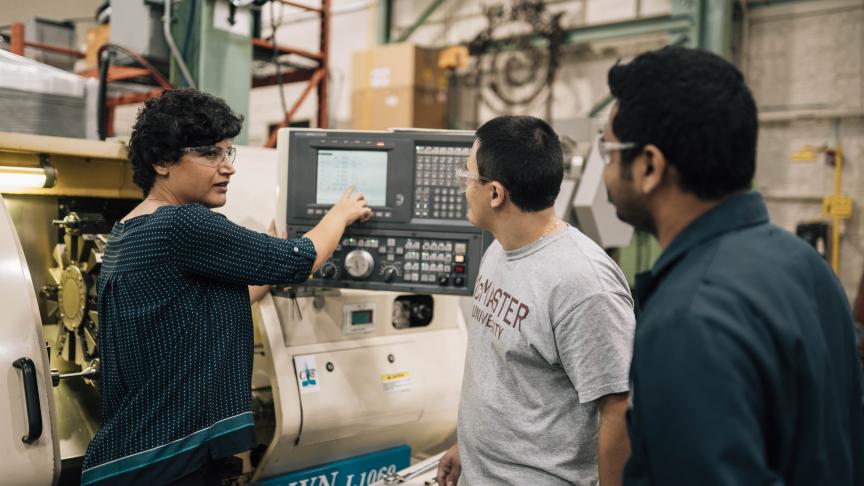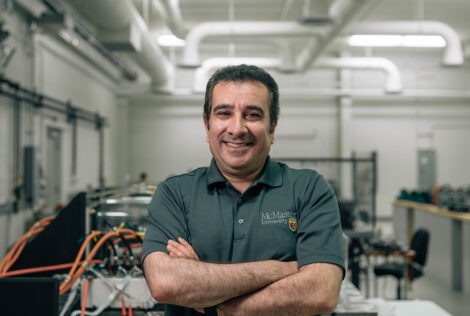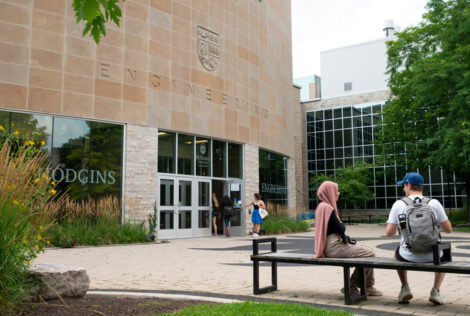

Harsh winter weather presents the Canadian National Railway Company (CN) with countless operational challenges. One example is the effect of extreme cold temperatures on the braking system of trains. This problem centres on blowdown air valves mounted to the wheel housings of locomotives. These mechanical valves are prone to seize when water crystals in the air lines freeze and expand. This can cause the brakes to lock in place (a fail safe design feature) resulting in significant delays as track side maintenance crews use portable heaters to reactivate frozen valves.
Two W Booth School grad students — Iqbal Singh and Manpreet Sidhu — took on this innovation challenge during the 2016-2017 academic year. Working in partnership with CN and under the supervision of Dr. Ross Judd, professor emeritus, Faculty of Engineering, McMaster University, the students ran a set of controlled experiments to help understand why the built-in electrical heater affixed to the valve assembly was not operating as intended.
They discovered that the energy produced by the heater was insufficient to keep the valves from freezing up in extreme sub-zero temperatures. Two solutions were recommended: i) install a metal shield around the blowdown valve to help contain radiant heat (see prototype in photo); and ii) redesign the entire assembly to ensure the heater and valve are closer together and share a common conductor. CN is considering the merits of both options and is keen to continue to work with the W Booth School and relevant vendors to deliver a preferred solution.
This challenge has the characteristics of an ideal W Booth School project — it engages an industry partner, responds to a real-world problem, and involves a faculty lead. Most important, it provides an exciting hands-on opportunity for W Booth School students to work in teams to deliver net positive valve.


